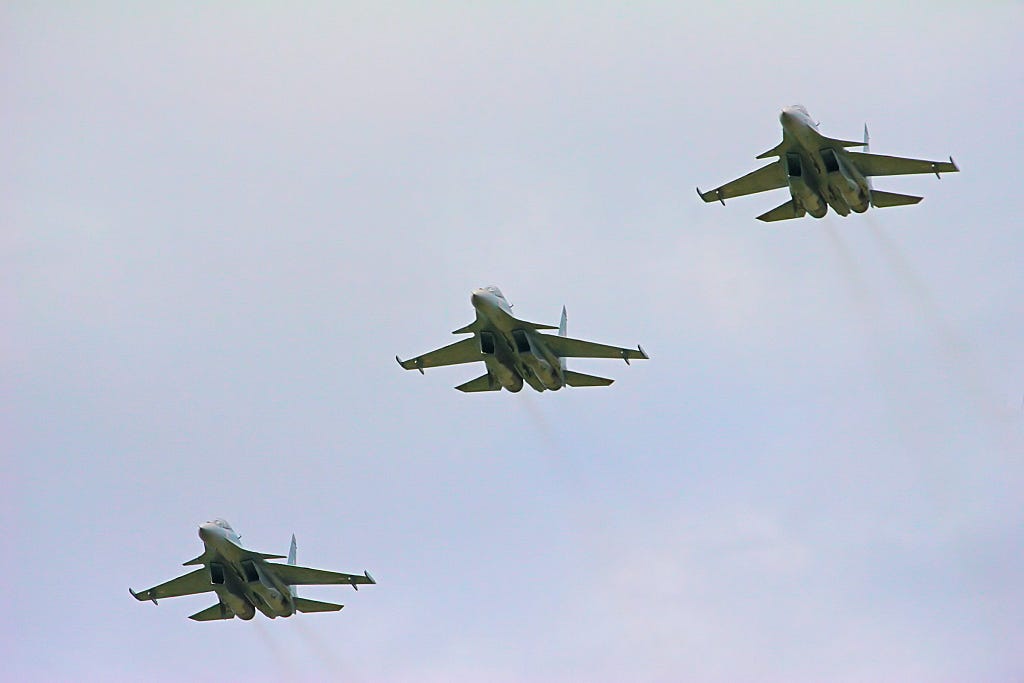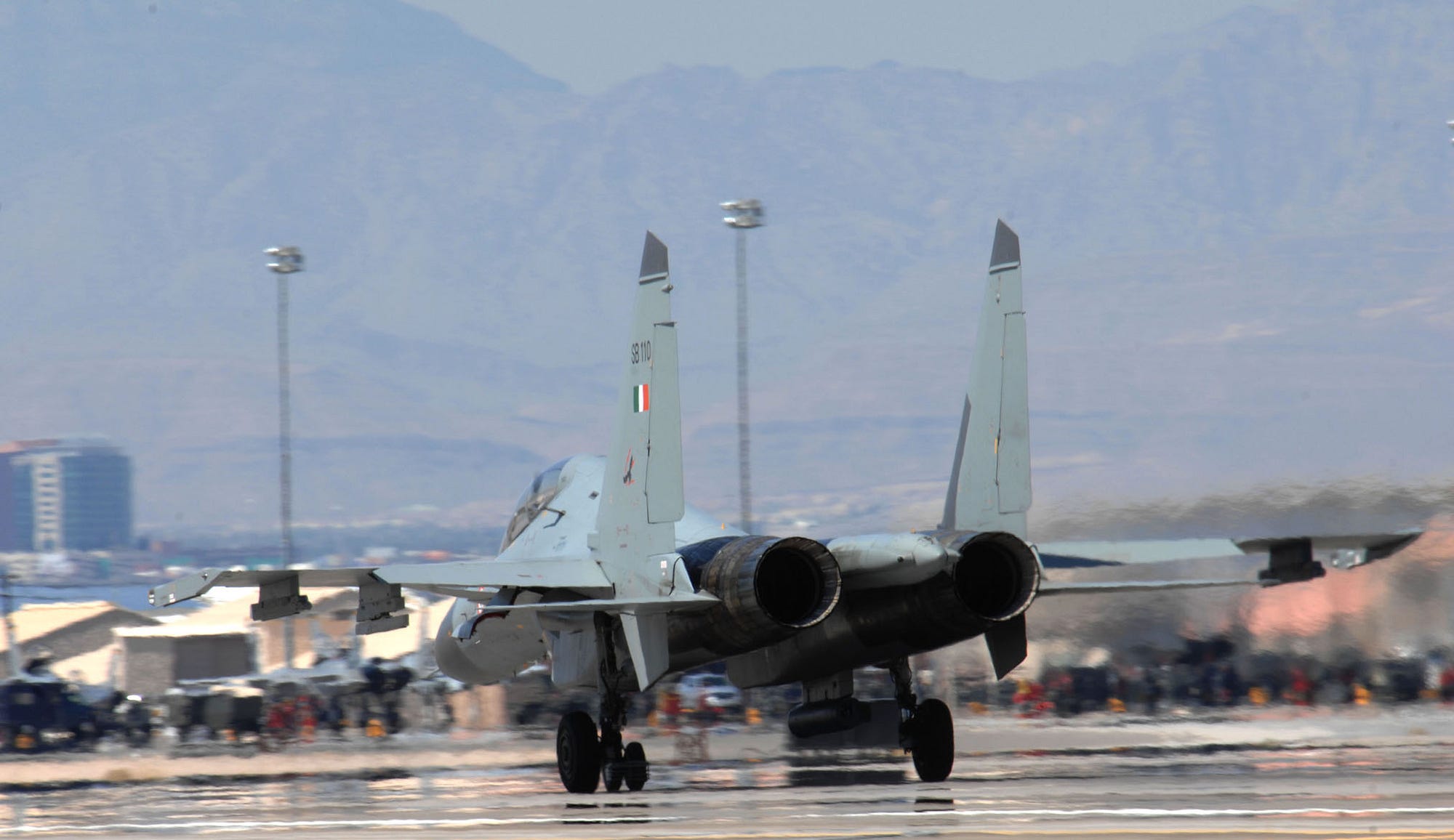by THOMAS NEWDICK
The SU-30MKIs constantly break down
In the past decade, the Indian Air Force has bought hundreds of Su-30MKI fighter jets from Russia. Some of Moscow’s most advanced export fighters, the warplanes should have helped New Delhi strengthen its military.
But it turns out, the twin-engine jets have failure-prone motors. Their AL-31FP engines break down with alarming frequency.
In March, Indian defense minister Manohar Parrikar revealed the propulsion problems.
There have been no fewer than 69 investigations involving engine failures since 2012, according to Parrikar. Between January 2013 and December 2014 alone, the Indian Air Force recorded 35 technical problems with the turbofans.
A shortfall in India’s Sukhoi fleet is a big deal. Especially at a time when India’s fighter squadrons are shrinking, and plans to induct the French Rafale fighter have stalled.
The Su-30MKI remains the pride of the Indian Air Force. Russia’s Irkut Corporation initially supplied the jets, and today Hindustan Aeronautics Limited produces them under license.
It was on New Delhi’s behest that Russia revamped the Cold War-era Su-27 into this modern “superfighter,” with thrust-vectoring engines, canard foreplanes, a digital fly-by-wire flight control system, electronically scanned radar and air-to-ground weapons.
India had to wait until 2002 before it started to receive the Su-30MKI in the form it had originally requested. The Air Force is set to receive 272 Su-30MKIs.
India also bought 18 austere Su-30K fighters without the multi-role capabilities or thrust-vectoring engines.
Of the Su-30MKIs, Russia has delivered 50. HAL is producing the rest at its Nasik facility, where aircraft continue to roll off the line. With around 15 to 20 aircraft handed over every year, the current orders are set to finish around 2019 or 2020.
 Above and below — Indian Air Force Su-30 fighters. Wikimedia photos. At top — Indian Air Force Su-30MKIs perform at an air show. Irkut photo
Above and below — Indian Air Force Su-30 fighters. Wikimedia photos. At top — Indian Air Force Su-30MKIs perform at an air show. Irkut photo
So what exactly is wrong with the engines? We have a pretty good idea.
Parrikar attributed the failures to faulty bearings that contaminated the plane’s oil supply. It seems that metal fatigue led to tiny pieces of metal shearing off the friction-reducing bearings, which then entered the oil system.
This accounted for 33 of 69 engine failures.
Another 11 failures were the result of engine vibrations, while eight more arose from a lack of pressure in that same lubricating oil. New Delhi has not revealed the cause for the remaining 17 incidents.
The Air Force responded by taking the issue up with NPO Saturn, the Russian manufacturer. According to Parrikar, the company has come up with nine different modifications to help solve the problems.
India has already incorporated these “fixes” into 25 engines built at its plant in Koraput. In the future, the engines should benefit from an improved lubrication system, superior-quality oil and bearings that are a better fit.
However, a more general worry for the Air Force is the poor serviceability of the Su-30MKI fleet — meaning the number of aircraft actually available for operations on a daily basis.
Based on figures given by Parrikar, only 110 Su-30MKIs are “operationally available.” From a total of more than 200 aircraft that Irkut and HAL had delivered by February 2015, that means 56 percent are ready at any given time.
India’s Su-30MKI fleet has suffered five crashes since 2009.
To be sure, it’s not a great record, but it’s also not notably bad — especially when compared with the attrition rates of the Indian Air Force’s older fighters. It’s unclear what role, if any, the engine problems played in these accidents.
What’s perhaps more significant is the fact that engine deficiencies have bugged the Flanker from the start.
“The initial batch of 18 Su-30Ks and 10 Su-30MKIs were grounded as a result of engine issues, that were subsequently put down to design problems,” Indian defense blogger Shiv Aroor wrote.
At the end of last year, the Air Force’s fighter strength dipped to just 25 squadrons — its lowest in recent history. India has an officially sanctioned requirement for 42 fighter squadrons, and maintained 32 until recently.
As New Delhi withdraws its older MiG-21s and MiG-27s from service, the total number could fall to just 11 squadrons by 2024.
Casting an eye toward Pakistan and China, a parliamentary committee in New Delhi has argued that 45 fighter squadrons are the minimum India needs to cope with the demands of a “two-front collusive threat.”
Either way, that means India needs a lot of Su-30MKIs — and the jets have to work.

India wouldn’t have to worry as much about its Su-30MKI fleet if it managed to import fighters from elsewhere. For years, New Delhi has unsuccessfully tried to nail down a program to buy 126 Rafale fighters from France.
Of these, Dassault Aviation would supply 18, while HAL would build the remainder. But despite announcements from both the French manufacturer and India, the deal is nowhere close to turning into reality.
As far as Moscow is concerned, the protracted Rafale deal has presented Russia with an opportunity to try and elbow the French out of the way, and sell yet more Su-30MKIs to India.
Indian officials have insisted that the Rafale is the only solution to its near-term fighter needs. But that changed at the turn of the year when Parrikar told reporters that an additional Su-30 buy could provide a solution — if negotiations with Paris were to terminally collapse.
The statement came as a surprise to the Air Force, which has long been wed to the Rafale, which it presents as the tailor-made solution to its fighter needs. On this occasion, the Air Force countered that the Su-30MKI and Rafale programs were indivisible, and fulfilled two different requirements.
But if the Sukhoi’s engine problems aren’t fixed soon, then this option might become less attractive. Perhaps as an insurance policy, Russia is now pushing India to buy its Su-35 — a more advanced, single-seat fighter based on the same Flanker airframe.
Regardless of what happens, the Russian-designed jet will have a place in the inventory for some time to come, despite its problems. There simply are lots of Su-30MKIs on order. India is also keen to pursue an upgrade for the jet, known as the Super 30.
This will add a new computer system and upgraded mission avionics, including an advanced active electronically-scanned array radar. Other changes will include revised countermeasure systems and “stealth” coatings to reduce radar signature.
New weapons will include the indigenous Astra air-to-air missile.
The 80-kilometer-range Astra was first successfully flight-tested from a Su-30MKI in May last year and destroyed a target drone this month. It was a good bit of PR for the Indian jet at a time when it needed it the most.
While the Astra will eventually arm most Indian fighters, one other missile will likely remain the sole preserve of the Su-30MKI. The Sukhoi is currently the only Indian Air Force fighter able to lift the heavyweight Brahmos-A, an Indo-Russian supersonic cruise missile.
But let’s back up for a second. Why did Parrikar mention the Su-30MKI as a possible replacement for the Rafale if the negotiations collapse? He knows the Russian fighters have loads of problems — as does everyone else. So that doesn’t make any sense.
Unless … you want to scare India’s politicians enough to finally close the deal on the Rafale.
No comments:
Post a Comment